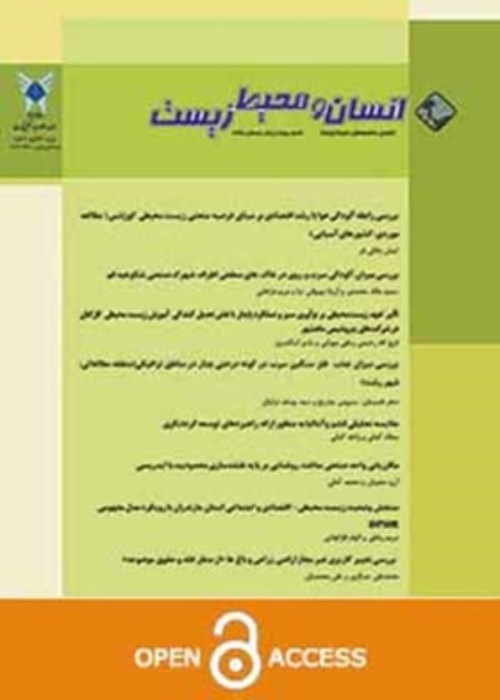Investigating the economic value of water in environmental, agricultural and industrial uses (Case Study: Urmia Lake Watershed)
Today, social, economic and environmental capital are measured as the main components of development simultaneously. Lack of comprehensiveness of programs creates various problems and issues, especially from environmental aspects after implementation. Degradation of environmental conditions will have negative effects and damage even on economic and social values in the region and its affected area. The purpose of this study is to investigate the economic value of water in environmental, agricultural and industrial uses in the catchment area of Lake Urmia.
Optimal allocation of production inputs at the macro level of decision-making is one of the requirements for achieving productivity growth. On the other hand, optimal allocation also requires an efficient market to explain the economic values of production entities. In this study, due to the limitation of water resources, in response to water demands for the use of different competitors using the United Nations Integrated Environmental and Economic Accounting (SEEA[1]) guidelines, it has been attempted to use the information available in Evaluation of the economic value (production value) of water in the Urmia Lake watershed in order to reflect the economic value of ecosystem services in decision making and water sharing appropriately.
According to estimates, the economic value of water in agriculture is 6045, in industrial use is 33342 and in environment is 24235 Rail’s per cubic meter. Consequently, compliance with the principles of sustainability and economic values of water dictates that even if water demand in the agricultural sector is uncontrolled by rising water prices, it will meet the environmental needs as a consumer. Prioritize water of higher economic value and its direct and indirect benefits. In the next 30 years, water demand in developing countries will increase as well as in developed countries. According to the International Panel on Climate Change, climate change will increase the pressure for water availability and exacerbate various forms of water pollution, affecting ecosystems, human health and the reliability of water systems in large parts of the world.
In the present study, based on economic principles and environmental economics and using the available information on water consumption in agriculture, industry and environment and macroeconomic accounts to assess the economic value (value Production of water in the catchment area of Lake Urmia). Therefore, according to the results, it is expected that with the establishment of the water market or at least in terms of economic value of ecosystem services, water allocated to the environmental needs of Lake Urmia will be supplied and specific water for industrial use will increase and at the same time capital Payments to use the revenue-generating potentials of Lake Urmia and related and appropriate industries should be given special attention. Utilization of water resources by these calculations is neither economical nor sustainable, a livelihood that is supposed to cause desertification and soil erosion or (globally) increase greenhouse gas emissions and cannot be considered stable. In this regard, due to the unsustainable use of water resources in the catchment area of Lake Urmia, to change the existing method and reduce farmers' dependence on water resources, the governance system can implement appropriate employment strategies, while supporting the response to Alternative needs and livelihoods for farmers by strengthening the implementation of the protection policy of Lake Urmia, especially by enforcing the law on harvesting water resources and establishing a system for measuring, regulating and controlling authorized withdrawals and establishing cooperatives of farmers. The exploitation of the lake in exchange for changing the existing agricultural pattern to a pattern with less water requirement or even modifying agricultural tributaries and allocating it to Lake Urmia to such farmers are granted. It is very important that it is necessary to consider people-centeredness and naturalism at the same time, and all decisions and executive actions to reduce water consumption, with the participation of existing recipients and with the cohesion, cooperation and joint action of all trustees and stakeholders.
- حق عضویت دریافتی صرف حمایت از نشریات عضو و نگهداری، تکمیل و توسعه مگیران میشود.
- پرداخت حق اشتراک و دانلود مقالات اجازه بازنشر آن در سایر رسانههای چاپی و دیجیتال را به کاربر نمیدهد.


